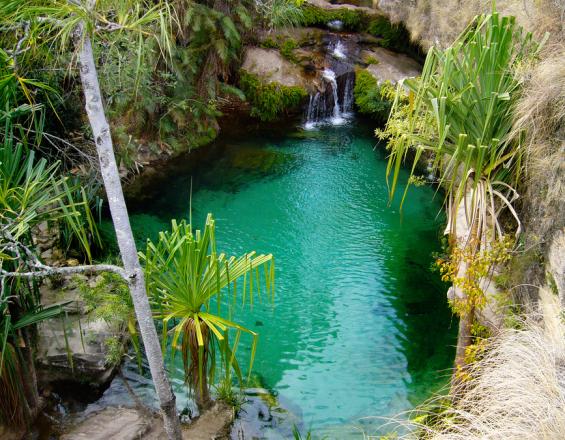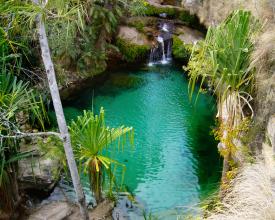
A model strategy for monitoring Isalo National Park by local park committees (CLP)

Park monitoring by local park committees is one of the co-management strategies of the network of Protected Areas managed by Madagascar National Parks. This is a collaborative co-management approach, with village committees taking the place of park agents in monitoring the park, and a monitoring contract to be drawn up with each local park committee. The surface area of the Protected Area monitored annually by the Local Park Committee (CLP) is counted on the basis of the number of squares patrolled.
To this end, the Local Park Committee :
- is equipped with suitable and timely materials and equipment (GPS, uniform, ....)
- raises awareness and collects essential information
- relays information on pressures and reports to park management
- contributes to the safety of park visitors
Impacts
Supervision of the Protected Area by local park committees is one of the indicators of management efficiency in the Madagascar National Parks Protected Area network, and the rate of achievement in terms of the number of squares supervised is around 78% on average.
In fact, this system has generated positive economic and social impacts. It has provided a source of income and job creation for the community through compensation for the local population, in particular the local park committee (CLP). 155 CLPs from 44 villages in 16 anchorages have patrolled the park.In addition, Isalo National Park remains one of the most visited flagship parks, thanks to the efforts of the CLPs to ensure visitor safety.
In terms of Environmental Impacts, the reduction in pressures is significant, with a rate of 95% for fire in 2018 compared with 2017, and in terms of surface area, 42400ha of the park's surface is monitored, i.e. 1696 squares representing 52% of the Protected Area. In terms of monitoring conservation targets, more specifically lemurs, the stability of the threat level was also noted.
